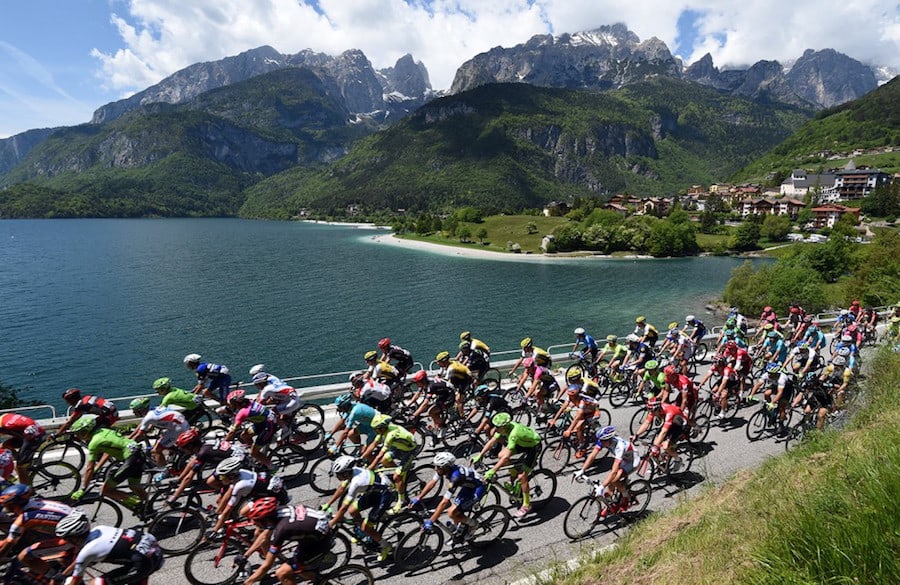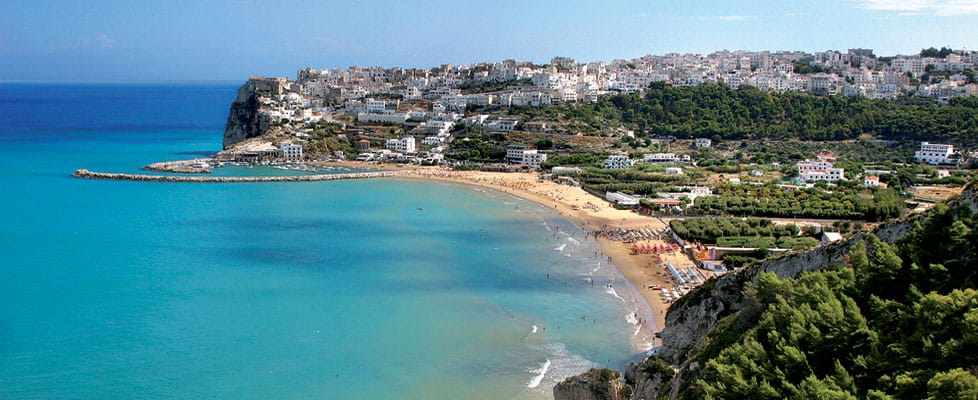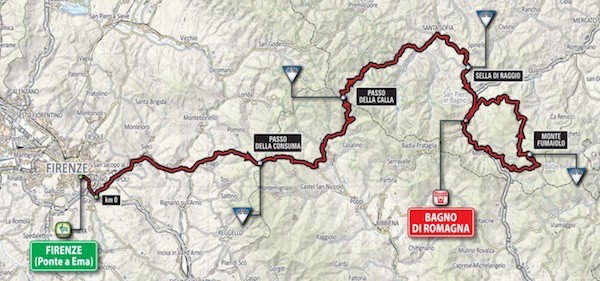The Giro d’Italia 2017 marks the 100th bicycle race through Italy. Starting in Sardinia this annual bike race travels through Italy’s regions from southern Italy to northern Italy.

The 2017 Giro, called Giro d’Italia Cento, riders will race through 21 stages. The race will include six sprint stages, eight stages of medium difficulty climbing, five highly testing climbing stages and two individual time trials (for a total of 67.2km). The race begins May 5 on the island of Sardinia. The race finishes at the Milan Duomo on May 28. Although Italy’s great cities Rome and Venice are not featured in the 2017 course, Florence and Milan are featured in Stage 11 and stage 21 respectively.
For those who love biking the Giro d’Italia is one of the most important races in the annual bike racing circuit. Italy has always been famous for its bike racing. In the American Classic movie Breaking Away it is the Italian bike racing team that comes to town and inspires the lead character Dave. And for those who love Italy and dream of a trip to Italy the Giro d’Italia provides all the vistas and great landscapes Italy is famous. The race travels through Italy’s regions providing viewers at home glimpses into the landscapes and small towns that make Italy a top vacation destination.
After beginning in Sardinia the race continues after a rest day in Sicily. There in stage 4 the racers encounter the first high difficulty steep climb on the trip from Cefalu to Mt Etna. Stage 6 has the racers begin on Italy’s mainland in the toe of the boot in the region of Calabria. The race travels along the sole of Italy’s boot through the southern Italian regions of Calabria, along the picturesque coast of Matera, to the beautiful region of Puglia in what are two low difficulty stages.

Stage 8 of the 2017 Giro d’Italia has the racers turning north in Puglia up the Adriatic coast to Puglia’s famous seaside resort town Pechici. This stage is hilly preparing the racers for the coming steeper southern Italian hills and mountains.
Stage 9 begins the first of three back-to-back medium difficulty racing days from Puglia to Molise, where the race’s final climb, the steep Blockhaus ascent (Passo della Maielletta or “Mamma Rosa”) on the Roccamorice side, is a 10% grade up to over 5,000 ft. above sea level. After this stage the racers will be feeling the burn and a well-earned rest day on May 15.
Stage 10 begins on May 16 in Italy’s greenheart region Umbria with the first of two individual time trials. Called the Sagrantino stage, named after the notable Umbrian variety of wine grape grown around Montefalco, today’s time trial is across mostly flat terrain from Umbria’s main city Foligno to the picturesque medieval village of Montefalco.
Stage 11 begins in the famous Renaissance city Florence and travels fromthe historic center out through the rolling hills of Tuscany ending with a downhill stretch to Bagno di Romagna in the region of Emilia Romagna. Bagno di Romagna means “Roman Baths” where there area is renown for its natural springs. Unfortunately there is no rest day here for the bikers to enjoy a few days in the baths and enjoying massages.

Stages 12 and 13 are low difficulty days with the race continuing across the mostly flat Emilia Romagna region to Tortona in northern Italy’s region Piedmont to end stage 13.
Stage 14 picks up in Castellania in the region of Piedmont located about 100 km south Piedmont’s main city Turin. Today’s race of medium difficulty travels up to the foothills of the Alps to the town of Biella, located about 80 km north of Piedmont and most famous for its fine cashmere. The final climb to Biella is a 13% grade to an altitude of about 2000 ft.
Stage 15 is also a medium difficulty course that travels 200 km from Valdengo to Bergamo in the region of Lombardy, located 40 KM north of Milan. After today’s race there is a rest day on May 22 before the final 6 stages of the 2017 Giro d’Italia.
The final stages of the Giro d’Italia are always famous for the climbs through Northern Italy’s Italian Alps.
Stage 16 is the first of two high difficulty race days, the other being Stage 18 in the Dolomites. Traveling from Rovetta to Bormio, the Stage 16 course runs first on a mild climb heading to Edolo and then climbs up the Mortirolo from Monno. The parcours takes a pass over the finish line in Bormio, climbs up the Passo dello Stelvio (Cima Coppi) and reaches Prato allo Stelvio and Glorenza, crosses the borders to Switzerland and clears the Umbrail Pass leading back to Italy, just 3 km from the Stelvio summit, and running down to Bormio.

Stage 17 cyclists travel through the region of Trentino Alto-Adige. This region located north of Venice on the Austrian and German border is full of climbs to burn the cyclists muscles as the Giro d’Italian 2017 draws toward the last few stages. This 217 km day is followed by stage 18, the second of two of two high difficulty days, on which the cyclists ride another 137 km and travel a cumulative gain of 12,000 ft through the Dolomites. This high difficulty day is followed by Day 19 and 20, both medium difficulty days, on which the cyclist continue hilly rides through northern Italy’s alps.
The 2017 Giro d’Italia comes to a close on Day 21 with a flat ride to the center of Milan.
For more about traveling to the 2017 Giro d’Italia check out ItalianTourism.us northern Italy tour packages and southern Italy tour packages. For more about the 100th Giro d’Italia race course watch the video below.
Giro d’Italia 2017 – Il Percorso (The Route) by giroditalia
GoItaly is the ItalianTourism.us Italy tours deals blog. GoItaly brings you the cheapest all inclusive Italy vacation deals. All Italy vacation packages and Mediterranean cruises are guaranteed to be unbeatable lowest price. Italy tours with air include all airport transfers. With GoItaly’s exclusive sales you’ll be visiting Venice, Florence, Rome, Amalfi Coast, Sorrento, Sicily, and Tuscany in no time. If you are looking for the best deals on escorted Italy tours, cruises from Rome, cruises from Venice, Amalfi Coast vacations, Tuscany vacations, Northern Italy vacations, Southern Italy vacations, and Rome, Florence, Venice packages then stay tuned to this blog or join us on one of our social networks.
This Giro managed to live up to the 100th anniversary. Seeing a new name in the person of Tom Dumoulin winning it, with Quintana and Nibali following closely, made it even more interesting.